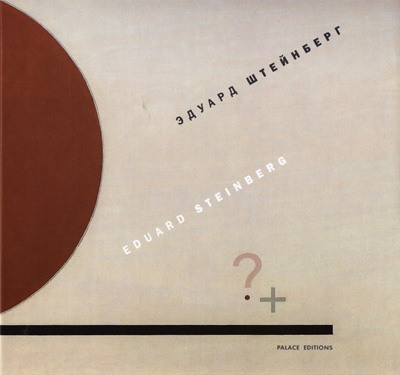
This post on St. Petersburg is the 3rd and final modern list guide from our recent travels which also include Stockholm and Helsinki. There are many reasons to visit St. Petersburg: a robust and fascinating history, political importance, physical size and opulence, world class museums, theater… the list is long and primarily exclusive of anything modern.
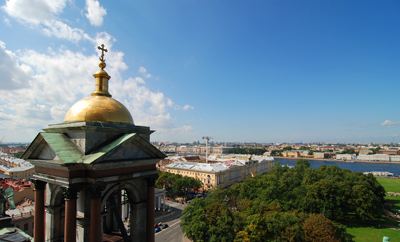
Unfortunately for those of us interested in modern architecture, design, art, food and culture, St. Petersburg can be challenging, taxing even. Recent design is minimal and spread out – and when we say recent, we mean within the last 150 years. The city of 5 million inhabitants seems to have been frozen in time since Alexander II. The “Venice of the North”, “Paris of the East”, or however travel agencies want to market it, doesn’t seem to have a personality of its own now that it has stepped out of its communist past. Despite the well conceived urban plan and endless avenues of architectural grandeur, there seems to be an awkward gap between the city’s original intentions and the tedious reality, the emptiness behind the facades, the lack of urban soul. Given the amount of time and expense it takes to get into Russia and the effort required to navigate St. Petersburg, we actually don’t recommend it to modern go-getters. Your resources are better spent on the Scandinavian neighbors to the west. However if you’re hell-bent on visiting (as we were) here’s a quick and dirty guide.
Mini-hotels have become popular in St. Petersburg as they are a bit cheaper and easier to book. Our advice is to spend the extra Rubles and book at a larger hotel in the city center. While more affordable, most of the mini-hotels are on the outskirts of town requiring a subway ride into the city center.

[photo by BUILD llc]
The outskirts of town are authentic but gray and dismal. Beautifully boring but perhaps not the environment you want to come home to each evening. A good resource for hotels is Tablet Hotels.
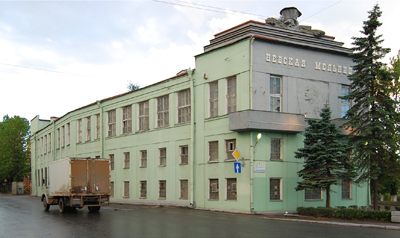

[photos by BUILD llc]
The subways are extraordinary in their monumental design and excruciating cleanliness. Unfortunately most subways stations do not allow photography for reasons that were unclear to us – we snuck in a few shots despite the discouraging stares.

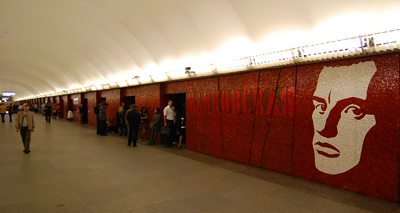
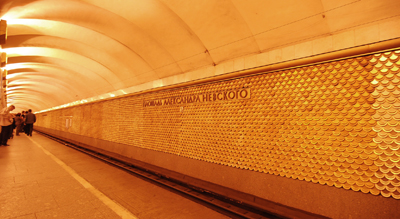
[photos by BUILD llc]
We’re not entirely sure how St. Petersburg made the Wallpaper* travel guide collection but it’s one of the only modern guides out there on St. Petes. Although half of the establishments we searched for in the guide have since shut their doors, for ten bucks it’s still a good resource.
One of the few modern buildings in the city is known appropriately as Vanity, which houses high end retailers and a gorgeous café/restaurant on the roof. The views from the circulation spaces and café are very pleasing.
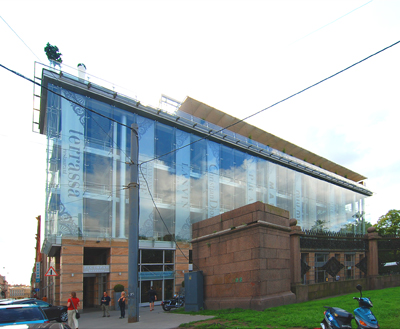
[photo by BUILD llc]
Located in the residential area on the bank of the Neva River is the Barcode Building, a collection of offices and shops by Vitruvio & Sons completed in 2005.

[photo courtesy of Alexey Naroditsky]
If the weather is nice, Aquarel (14a Dobrolubova Prospekt) will take care of you for lunch and dinner. The reticent service industry in St. Pete’s requires constant effort from the patron’s side, which is a bit upsetting when you calculate the prices. But the food is good and the atmosphere is pleasant.

[photo by BUILD llc]
Tucked behind a traditional façade, the modern interior of the Fasol Café is a welcomed find (17 Gorokhovaya Ulitsa).


[photos by BUILD llc]
The Hermitage cafe sits within the Palace Square at Dvortsovaya Pl. 8

[photo by BUILD llc]
The amount of walking necessary to hunt down the modernism in St. Pete’s is excessive. Russian drivers also have a different relationship with human safety and a pedestrian’s right-of-way. Subsequently the drama of finding these interiors is either a tremendous victory or quite frustrating. This is where the vodka comes in.
Day Night (Posadaskaya Str 6)

Maison Martin Margiela (Bolshaya Konushennaya ulitsa, 2)

Mania Grandiosa Shoe Salon (Nevsky avenue, 41 & Bolshoy 1)

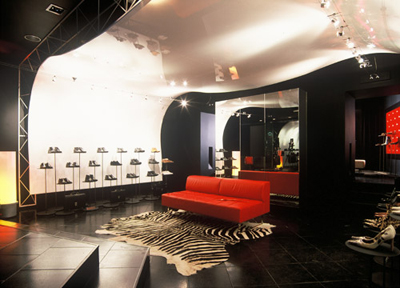
Di Versia Shoe Salon (Vladimirsky Avenue, 8)
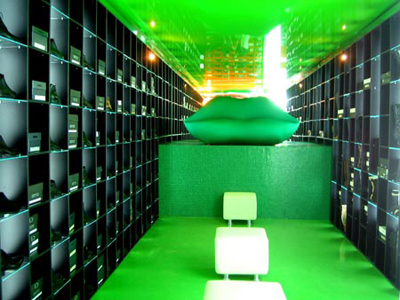
While the line to enter the Hermitage can be up to 3 hours long the Russian Museum rarely has a line at all. The Russian museum has an outstanding collection of traditional and modern work. It also has a nice collection of Russian contructivism and subsequently has yet another edge over the Hermitage – that everything in the collection isn’t stolen.
